Sourdough sticky buns elevate traditional sourdough cinnamon rolls to a whole other level. Sticky buns are a soft, pillowy cinnamon roll topped with a decadent caramel sauce (and pecans if you choose). These melt in your mouth cinnamon buns are one your family will ask for time and time again!
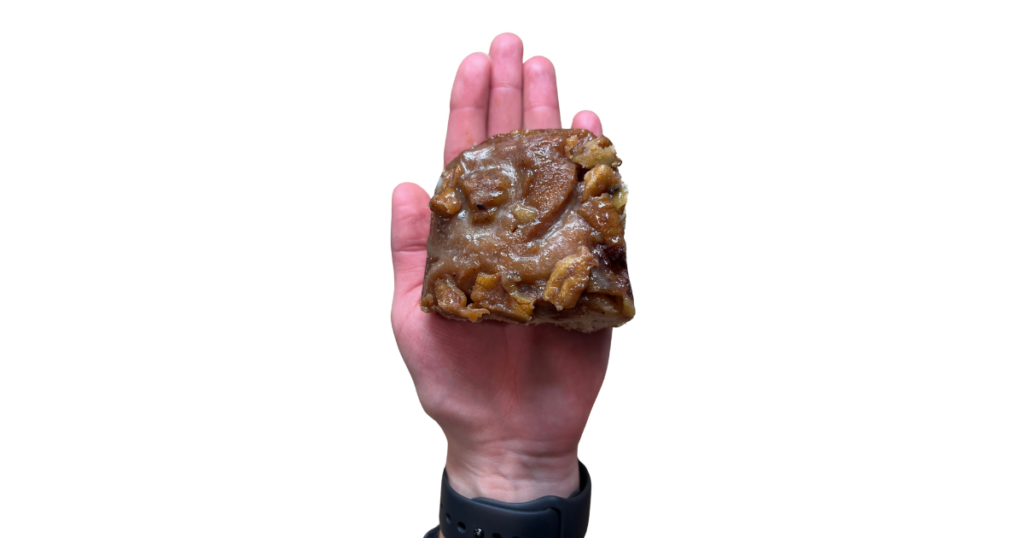
A few years ago when I was eating gluten-free, I could never have imagine eating a variety of baked goods. By adding sourdough baked goods which have undergone a long fermentation period, I am able to enjoy items with flour. Now I have the delight of sharing all these great recipes with you!
This includes sourdough bread, sourdough cinnamon rolls and of course – these delicious sourdough sticky buns. Nothing makes me happier than being able to share desserts with my family and friends while being able to enjoy them too.
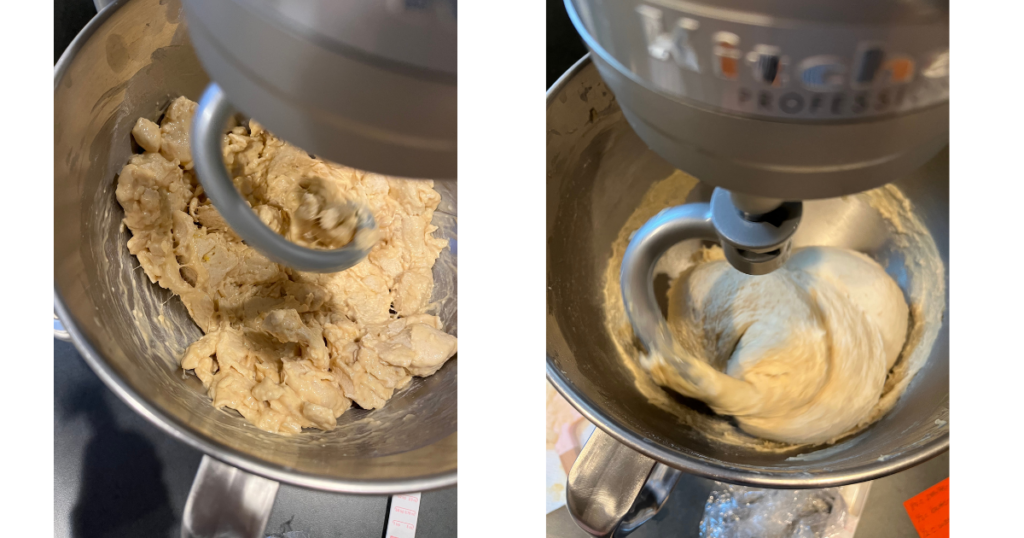
Sourdough Sticky Bun Ingredients
This sourdough sticky bun recipe was inspired by one of our family’s favorite sourdough recipes: aka ‘the best cinnamon rolls‘. This soft dough reminds me of a brioche dough – rich in butter and lightly sweetened.
Our recipe takes honey (or maple syrup) to sweeten the dough, which leads to a soft interior. Smother this dough with a cinnamon sugar filling – a mixture of brown sugar, cinnamon and melted butter.
To top the buns, make a decadent caramel sauce from heavy cream (or whole milk), butter, honey (or maple syrup), salt and vanilla extract. Stir pecans within the caramel for a little crunch. No cream cheese frosting necessary!
These sticky buns come together with a mixture of all purpose flour (or bread flour, white flour, whole wheat flour or a mixture of flours), active sourdough discard, baking soda, baking powder, salt, butter and honey (or maple syrup).
After the bulk fermentation, remove the dough from the refrigerator. Then, bring it to room temperature and mix with baking soda, baking powder and eggs.
Then, similar to a cinnamon roll, use a rolling pin to shape the dough into a rectangular shape. Next, later the dough with the cinnamon sugar filling and roll tight using a bench scraper.
Once cut, place the sticky buns into a baking dish filled with the caramel sauce and bake in the oven until the sauce is bubbling and the buns are golden brown. Finally, invert the pan td to allow the caramel sauce to drench the rolls. These are enjoyed warm or cold.
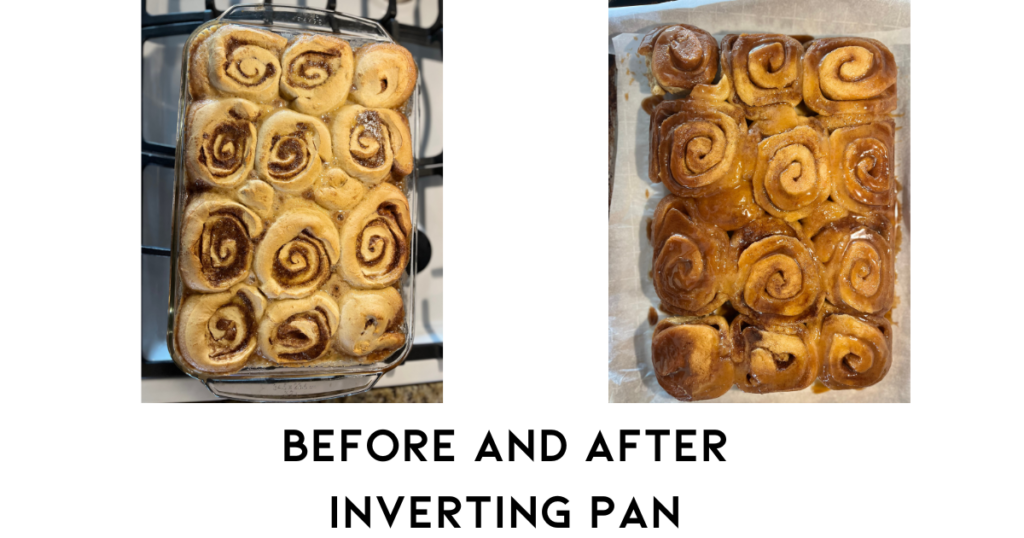

Making the Sourdough Sticky Buns on a Baker’s Schedule
This timeline is highly variable based on temperature of the home and how long one would like for the dough to ferment. Adjust accordingly to personal preferences and notes below.
If the sourdough is dormant (aka in the fridge), remove from the fridge and feed. Timing can change based on how warm the home is. For our home during the summer, this can take 4 to 8 hours before it is ready to use within a recipe. In the winter, it can take up to 18 hours before the sourdough starter is back to the active, bubbly form.
We maintain our sourdough starter at a relatively small amount (1 – 2 ounces). To our sourdough starter, we add 2 ounces of flour and 2 ounces of water to have enough active sourdough starter for this recipe and have starter remaining.
- 8:00 AM – Begin to prepare the sourdough brioche dough in a large bowl. Cover the dough with plastic wrap or a beeswax wrap and allow to rise in a warm spot. This is the start of the bulk fermentation.
- The goal is to allow the dough to rise about 1/2x to 1x the amount it originally started with. Note it is important to consider the temperature of the home to avoid over proofing the dough.
- Our house is generally 74 (degrees) during the summer and 66 (degrees) during the winter. It takes approximately 8 hours for our dough to overproof in the summer and 12-16 hours to overproof in the winter.
- *8:00 PM – See above note on over proofing to adjust timeline as necessary. Place covered dough within the refrigerator and allow to continue the long fermentation.
- 8:00 – 9:00 AM (Day of Bake): The next day, remove the dough from the refrigerator and allow to come to room temperature. In a stand mixer, add the remaining dough ingredients (egg, baking soda, baking powder and salt) together.
- Use the dough hook attachment to incorporate, scrapping the sides of the bowl when necessary. This could take upwards of 45 minutes due to the butter (high fat) content of the dough.
- Meanwhile, prepare the cinnamon sugar and caramel sauce. If you are roasting pecans, begin at this time.
- To create the caramel melt butter in a pan. Add all other ingredients and bring to a boil. Reduce to a simmer for at least five minutes or until the sauce has became creamy and lightened in color.
- The caramel should begin to give an aroma of caramel, and or butterscotch, depending on how your senses pick up the scent. This will be more on the liquid side, however, as the cinnamon roll dough sits in the caramel it will begin to thicken.
- It will become more of a soft caramel as it sits within the fridge .
- Once the caramel is made, place within the 9×13 baking pan and allow to cool while rolling the dough.
- Next, use a rolling pin to flatten the dough to 1/4″ thickness and add filling to cinnamon sugar filling. Roll the dough into a log shape and cut to size. To cut, use a pastry blender, twine, unflavored dental floss or a knife.
- To cut dough with twine or dental floss, grab a piece between your pointer fingers as you would to begin flossing your teeth.
- Place under the dough roll and gently wiggle underneath. Cross your hands above the roll in a criss-cross pattern and gently pull to opposite sides, pinching the roll.
- Place the cinnamon rolls into the caramel sauce. Allow to rise within a warm place until dough has became puffy and close to doubled in size. Length of rise time may vary on proofing depending on temperature of household.
- Use the dough hook attachment to incorporate, scrapping the sides of the bowl when necessary. This could take upwards of 45 minutes due to the butter (high fat) content of the dough.
- 10:00 – 11:00 AM (Day of Bake): Preheat oven and bake on a 9×13 glass pan until golden brown and a toothpick comes out clean from the rolls. (Approximately 20-25 minutes).
- 11:00 AM – 11:30 AM (Day of Bake): Once sourdough sticky buns are baked, remove from oven for 5 minutes. Line a cookie sheet (or larger pan than the 9×13 glass pan) with parchment paper. Place the cookie sheet on top of the glass pan and flip over to invert the buns, jiggling the pans if necessary. Scrape any remaining caramel over the sticky buns and serve warm.
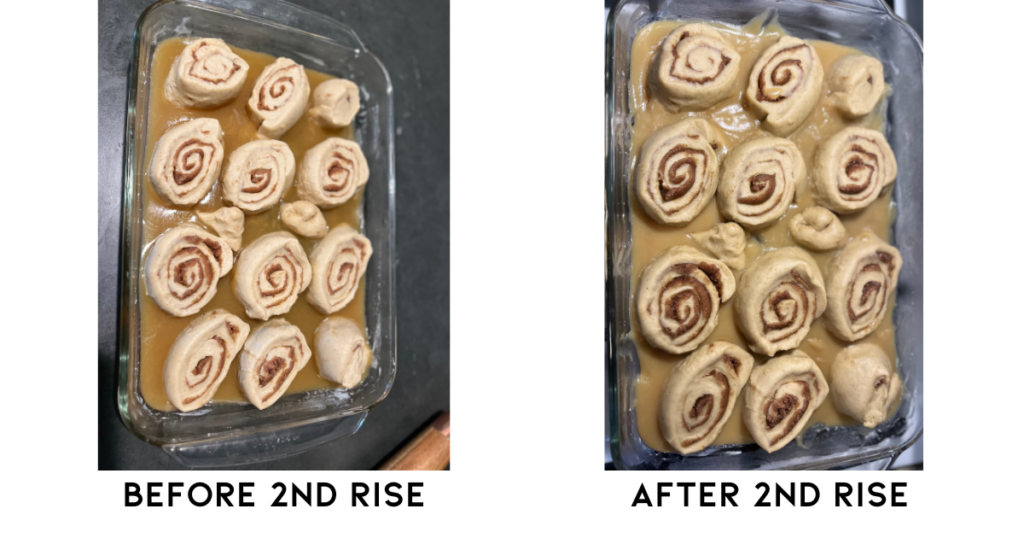
Frequently Asked Questions
Do you have to use a stand up mixer to incorporate this dough?
- A stand up mixer is helpful when making a brioche -like dough. The stand up mixer, specifically a professional mixer like the Kitchen Aid brands, have extra power from their dough hook attachment which can help to the dough’s cold butter. A brioche dough can take up to 45 minutes to build enough tension. In a pinch, you can knead by hand.
How long can these sticky buns stay fresh?
- Sourdough sticky buns can stay fresh on the counter for up to 3 days without refrigeration. Because the eggs and butter within the dough also experience fermentation when paired with the active sourdough starter, they can stay on the counter for longer after baked. The caramel, however, does have heavy cream and butter which can turn faster.
- It is recommended to store the baked goods with a layer of wax paper and then plastic wrap or beeswax wrap within the fridge after one day.
- If put within an airtight container, these sourdough sticky buns can last for up to 3 months.
Are pecans necessary for these sticky buns?
- Pecans are not a requirement of sticky buns. If you are not a fan of nuts, simply omit.
- If you like the taste of roasted pecans, roast pecans on a pan in the oven for 5-10 minutes at 350° or until fragrant and golden brown.
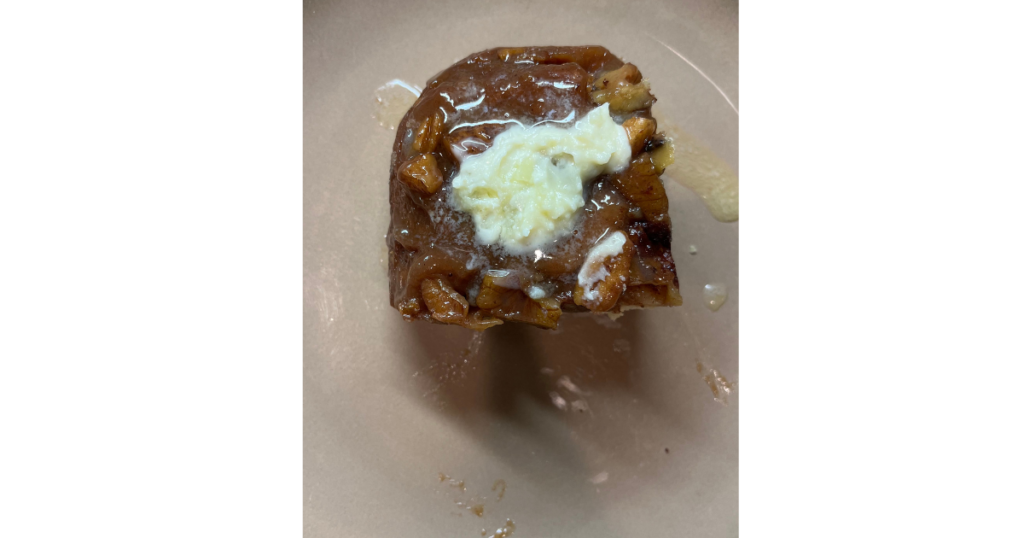
What should you top sticky buns with?
- While sourdough sticky buns are sweet on their own, heat them back up with a little dab of butter on top and they will be absolutely decadent.
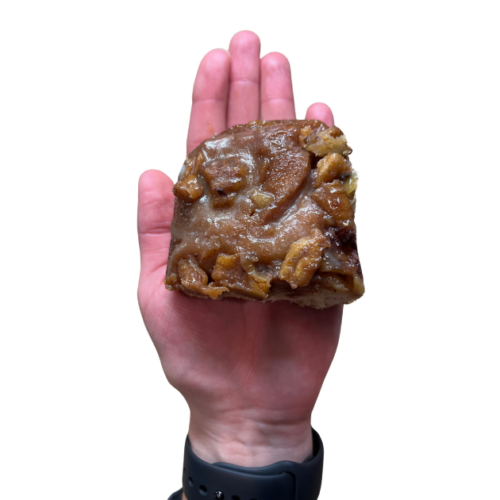
Sourdough Sticky Buns
Equipment
- 1 Stand Mixer
- 1 Dough Hook Attachment
- 1 9×13 glass pan
- 1 Cookie Sheet
- 1 Wooden spoon
Ingredients
Sourdough Sticky Bun Brioche Dough
- 4 cups All Purpose Flour *May need additional flour up to 1/4 cup if dough is too sticky.
- 1/2 cup Honey
- 4 TBS Unsalted Butter *Can use salted butter, see note about sea salt.
- 1/2 TSP *Sea Salt *If using salted butter, do not add.
- 2-3 TBS Water May need more in 1T increments to allow dough to come together
- 1/4 Cup Active Sourdough discard Active Sourdough Starter “Discard” (Active sourdough starter calls for 100% hydration)
- 2 Eggs
- 1 TSP Baking Soda
- 1 TSP Baking Powder
Cinnamon Sugar Filling
- 4 TBS Unsalted Butter Can use salted butter
- 1 cup Brown Sugar
- 2 TBS Ground Cinnamon
Sticky Bun Caramel Sauce
- 1/2 cup Heavy Whipping Cream
- 6 TBS Unsalted Butter *Can use salted butter – see salt note
- 1/2 cup Brown sugar
- 1/8 tsp Salt *Leave out if using salted butter
- 1 TBS Vanilla extract
- 3 TBS Honey
- 3/4 cup Pecans Optional
Instructions
Make brioche dough and allow to rise on countertop
- To begin making the sourdough sticky buns, start with the dough. In a bowl which as enough room for the dough to rise by 1x the starting size, combine the first ingredients. The ingredients (melted butter, honey, all purpose flour, sourdough starter and water) will be mixed together by hand until a shaggy ball forms. Be prepared, the dough will be sticky at this time. *Can add eggs during this time. If uncomfortable with eggs sitting at room temperature, add in the next step.Cover tightly with plastic wrap or a beeswax wrap. Allow the dough to sit on the countertop for 12-24 hours (dough will have risen 1/2 to 1x the starting size). Once risen, place the covered dough into the fridge to begin long fermentation period.
Kneading dough after bulk fermentation in refrigerator
- The next morning (or 12 – 24 hours after being refrigerating), allow the dough to come to room temperature. Add in the remaining ingredients: eggs (if not already previously added), baking soda, baking powder and salt. Mix with a stand mixer utilzing the dough hook attachment. *If adding eggs now, the dough will have to be pushed to the center a few times as the dough will be incorporating an additional 'liquid'.Allow the dough to come together until it has a windowpane like consistency when stretched. The dough should spring back when touched. Note, this process could take 30-45 minutes to complete due to the high fat content of the dough.
Make Cinnamon Sugar
- In a separate bowl, mix together the cinnamon sugar filling. Simply mix the filling ingredients (butter, brown sugar and cinnamon) together until combined. Allow the butter to soften either on the countertop, on the microwave or stove top until a finger can be pushed into the butter with little resistance. It is important to ensure the butter is not melted before mixing together.
Roll and Cut Dough
- Next on a smooth surface, roll the dough into a rectangle shape of 1/4 inch thickness. Though the dough does not commonly stick to kitchen countertops, you can place butter, a neutral oil or flour lightly on the counter.
- Once the dough is rolled thin, spread the cinnamon sugar mixture across the dough. Use a bench scrapper to wrap the dough into a tight roll. Slice the dough into rolls with a pastry cutter, knife, non-flavored dental floss or twine. If utilizing plain dental floss or twine, grab a piece between your pointer fingers as you would to begin flossing your teeth. Place under the dough roll and gently wiggle underneath. Cross your hands above the roll in a criss-cross pattern and gently pull to opposite sides, pinching the roll. The amount of rolls depends on how large of cinnamon rolls are preferred. We cut 12-14 rolls each time (about 1-1/2 to 2 inches in thickness)
Make Caramel
- Begin by melting butter in a pan. Add all other ingredients and slowly bring to a boil – ensuring the heavy cream does not curdle. Reduce to a simmer for at least five minutes or until the sauce has became creamy and lightened in color. The caramel should begin to give an aroma of caramel, and or butterscotch, depending on how your senses pick up the scent. This caramel will be more on the liquid side, however, as the cinnamon roll dough sits in the caramel it will begin to thicken. Pour into a greased 9×13 glass pan. Allow to cool for 5-10 minutes before next step.
Second Rise and Bake in Oven
- After caramel has cooled slightly, place the rolls into the 9×13 pan on top of the caramel. Option to add pecans if you would like.Next, allow the rolls to rise on the countertop for at least 30 minutes (up to 2 hours) before placing in the oven. Bake for 20 to 25 minutes or until the tops are firm to the touch. The caramel will begin bubbling around the sticky buns.
Flip/Invert Sticky Buns
- Remove sticky buns from oven and allow to cool for 5-10 minutes. Line a cookie sheet (or pan larger than 9×13 glass pan) and place overtop of the sticky buns. Flip the 9×13 pan and wiggle the pan until the sticky buns release. Scrape remaining caramel from 9×13 overtop of the sticky buns. Enjoy!
Notes
Are you team sticky buns with pecans or sticky buns without pecans? Let us know in the comments below!

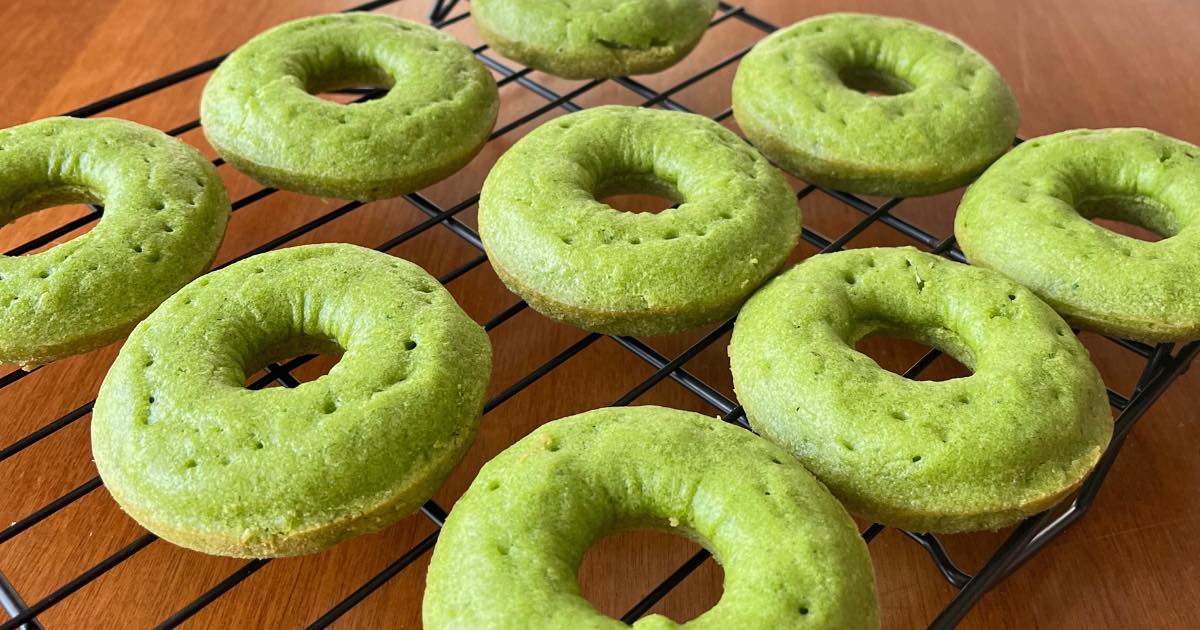

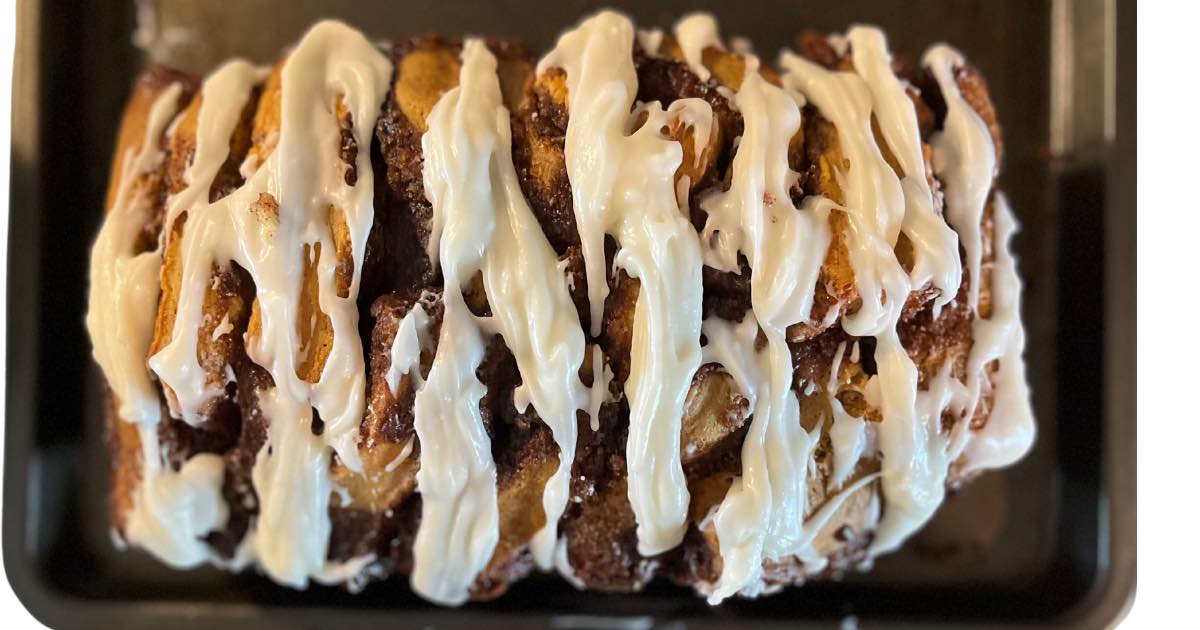
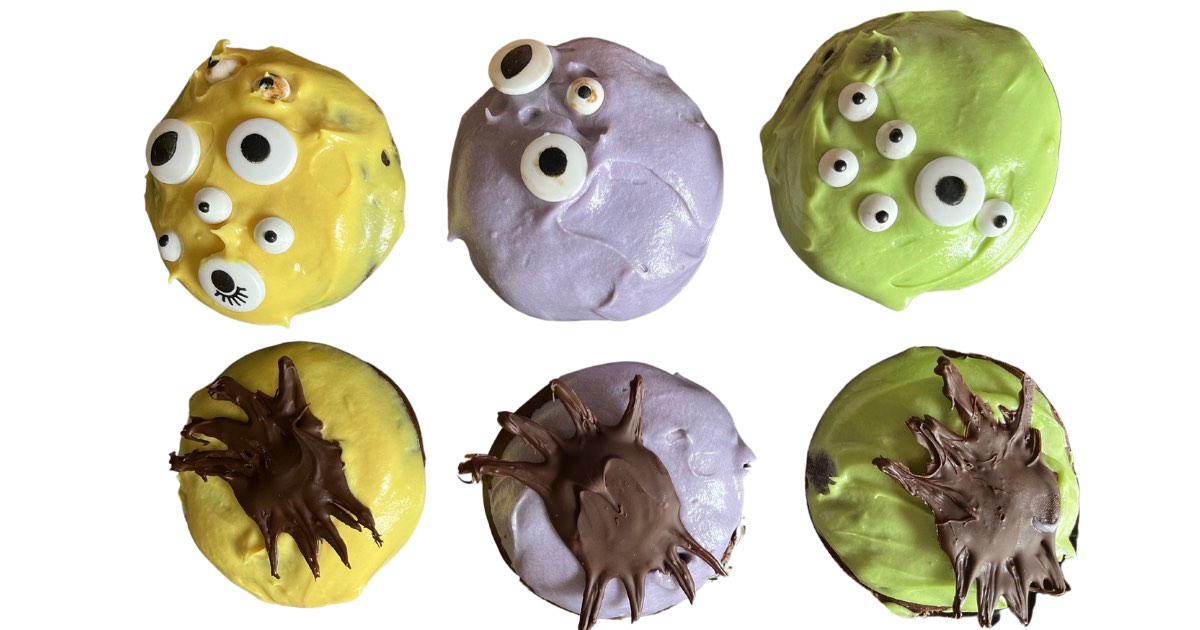
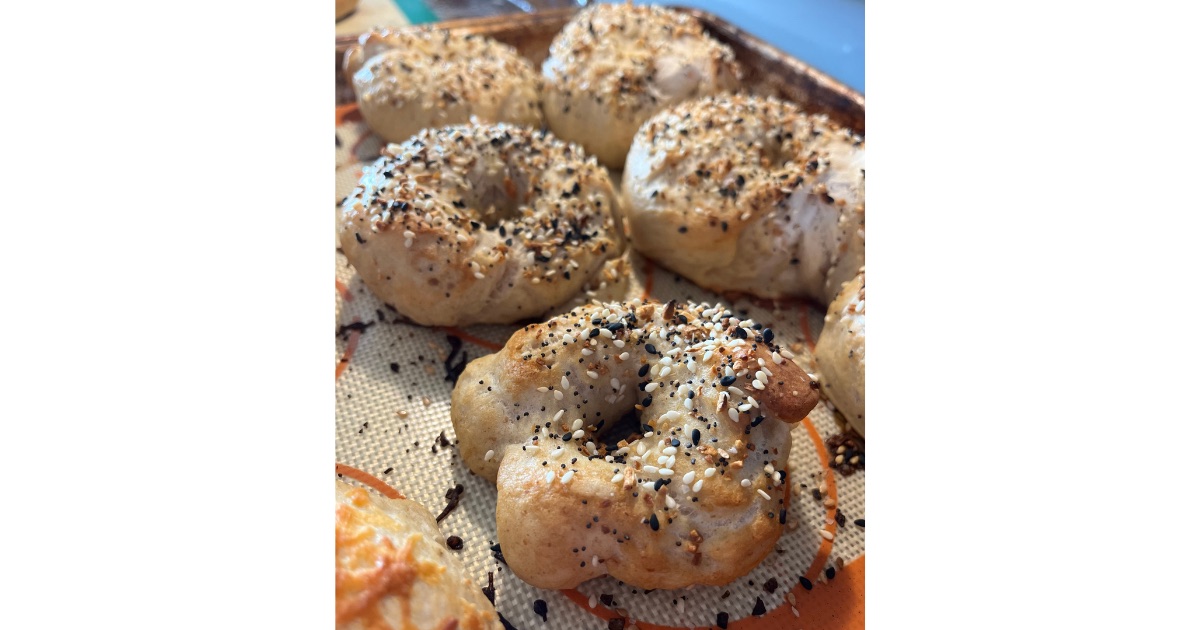
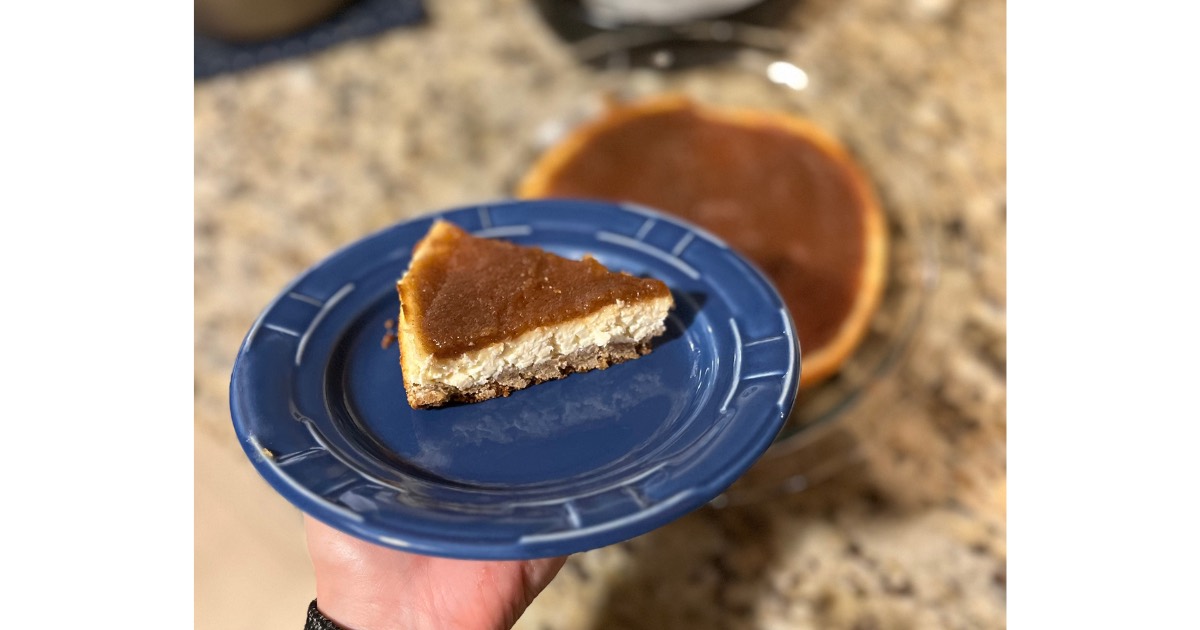
I was just looking for something likebthat, thank you!!
Wonderful! If you end up testing it out, let us know your thoughts!
This looks delicious! Cant wait to try them!
Thank you! They are truly such a treat. Let me know your thoughts when you try them!
Туры в Териберку: путеводитель по северным чудесам
экскурсия из мурманска в териберку [url=teriberka-tury.ru]teriberka-tury.ru[/url] .
The hardest recipe that I have ever made. It was good but not good enough to spend three days on it. The dough was a sticky mess. I barely got it rolled out. When I did it stuck so bad to the counter even after putting butter down like you suggested. I would recommend to use flour instead. I almost cried after spending this much time and it turning into a sticky glob.
Thank you for taking the time to let me know your experience! I am so sorry the dough caused you trouble and am glad you were able to troubleshoot.
I do regularly make this recipe. I just went back and added a note in the recipe to add more flour based on how sticky the dough is. I use up to an additional 1/4 cup, which certainly impacts the stickiness. Temperature of the home and viscosity of sourdough discard can impact the overall stickiness as well.
I hope this helps!